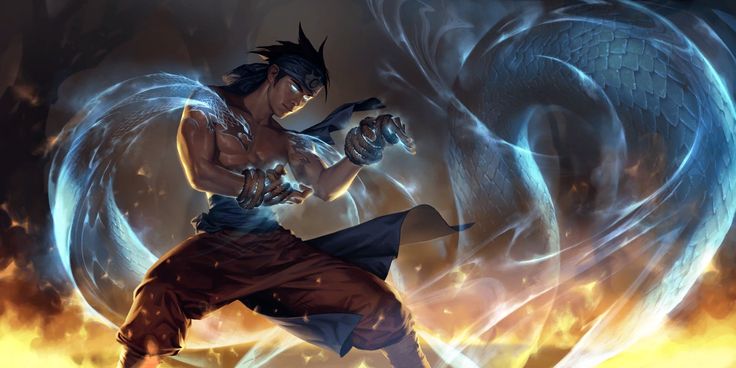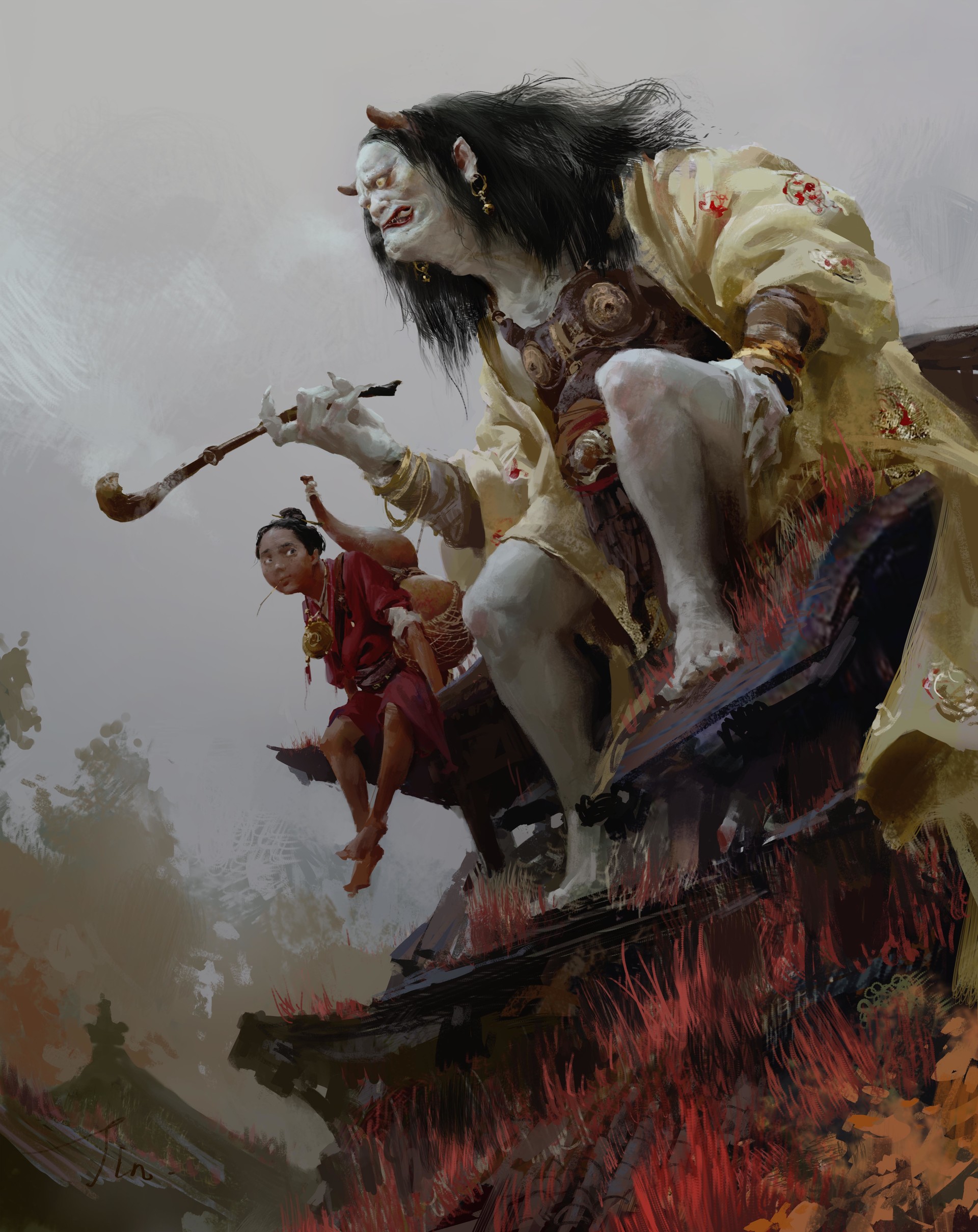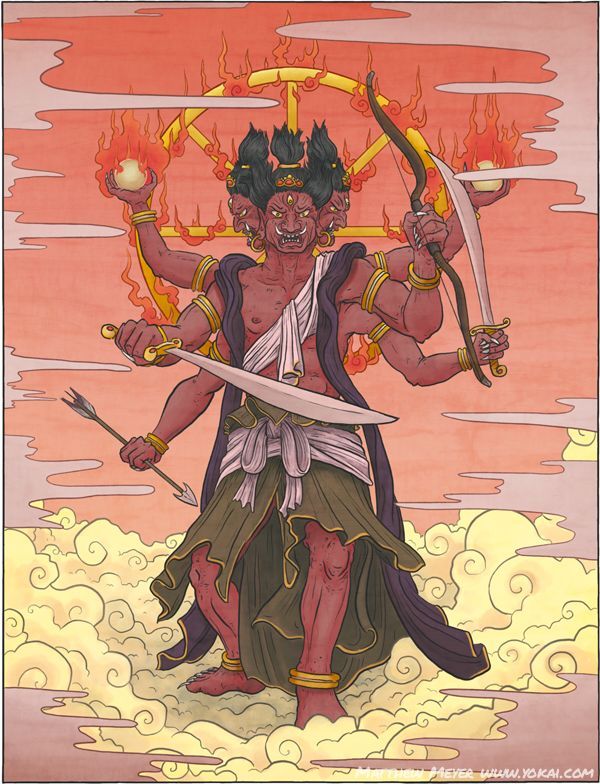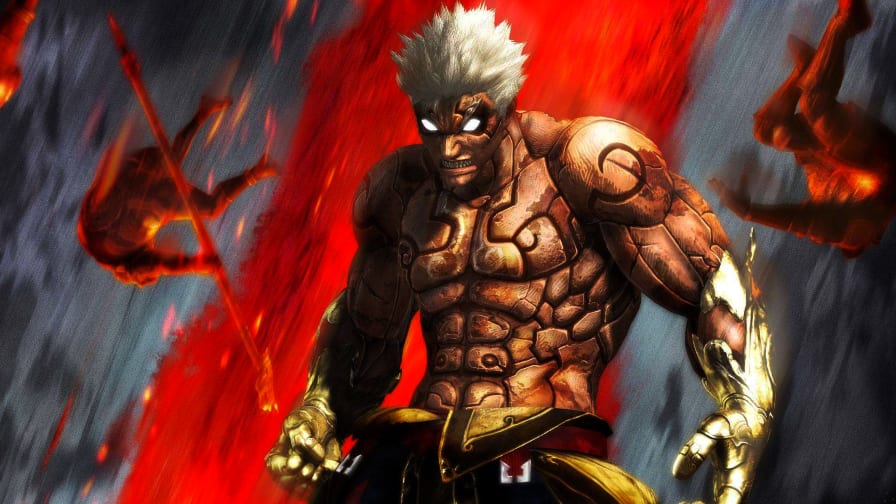Way of the Mythological Creatures (5e Subclass)
From D&D Wiki
Path of mythological creatures[edit]
Monk Subclass
When you choose this monastic art at Level 3, you will learn the techniques of legendary beings such as dragons, Onis and Asura's.
- Ancestral Power
Your damage die will increase by one size following the table below:
| Monk Level | Damage Die |
|---|---|
| 3-7 | d6 + Dexterity modifier |
| 8-13 | d8 + Dexterity modifier |
| 14-17 | d10 + Dexterity modifier |
| 18-20 | d12 + Dexterity modifier |
- Strengthened Body
For each Monk level you increase, you can add your Wisdom modifier to the life that would be gained at the level.
- Ki Replenishment
Every third turn, you regain your Wisdom modifier in Ki points.
- Defense without Armor is increased
- Your unarmored AC becomes 12 + your Dexterity modifier + your Wisdom modifier.
- At level 11, this becomes 15 + your Dexterity modifier + your Wisdom modifier + your proficiency bonus.
- Value Increase
When you choose this path at level 3, your DC for your monk skills = 10 + your Dexterity modifier + your Wisdom modifier + your proficiency bonus
At level 3, choose your first fighting style. You can choose another one later on at Level 6 and 10.
To take on one style, or change to another, one must expend an action to do so. When you change styles, you can only keep the passive benefits of the style.
When you change styles during a transformation, it causes the transformation to be lost.
Dragon Style[edit]
A style known for delivering several simultaneous blows to the enemy, giving them no chance to fight back or defend themselves adequately in a furious dragon-like fashion. His favorite technique is the sequence of blows, a variation of the burst of blows that allows him to deliver many more blows in sequence on the same target, focusing exclusively on destroying it.
Once you choose this style, you also choose your familiar dragon.
| Dragon Color | Damage Type |
|---|---|
| Black | Necrotic |
| Blue | Lightning or Radiant |
| Brass | Fire |
| Bronze | Lightning |
| Copper | Acid |
| Golden | Fire |
| Green | Poison |
| Purple | Lightning |
| Red | Fire |
| Silver | Cold |
| White | Cold |
- Minor Graduation
At Level 3, 6 or 10 you gain the following features:
- Focus on combat
Each attack you land on a single target target, the next hits you deliver in the same turn decrease the the target's CA decreases by 1, to a maximum of -4
- Strike sequence
Replace your feature Flurry Of Blows with the ability to perform a sequence of blows. Whenever you hit a target with an attack, spend a bonus action and a ki point to start a a flurry of blows. When you start a sequence, you play another attack. If you miss, end the sequence. If you attack, roll the damage die and continue the sequence until you until you miss a blow, or make 5 blows in sequence.
- Dragon Blows
At Level 5, 8 or 12 , when the monk performs an attack he may choose to spend a ki point to perform a powerful blow with the dragon's appearance. The blow deals 1d4 damage from the familiar dragon if it hits the enemy while a faint aura surrounds the monk. You can spend 2 ki points to use this ability in conjunction with the strike sequence. increasing the 1d4 die by the Martial Arts progression each time the strike sequence hits up to a maximum of 1d20.
- Grandmaster
At Level 7, 10 or 14 you become a dragon grandmaster is a ruthless being who doesn't stop striking until your opponent is on the ground. Your hands are heavier than normal, and your fighting spirit burns brightly, always showing its pulsating aura when you place your fists in front of your body.
- Improved strike sequence: The maximum number of sequential strikes the character can make in one turn becomes 9.
- Improved combat focus: The maximum AC you can take from the target becomes 6 + Dexterity modifier.
- Improved dragon strike: Starting with the second strike in a sequence, the Dragon Blows ability activates on its own at no ki cost.
- Draconic Form
At level 9, 12 or 15 you can spend 8 KI to assume your draconic form for 5 minutes, your hair floats, and dragon tattoos appear on your body that glow with the color of your dragon. scales appear on his forearms like gauntlets. You get 3 more unarmed strikes per turn its attacks cause 1d8 additional elemental damage. When you finish the combat, you will suffer 2 levels of exhaustion.
Oni Style[edit]
Style of the Oni demons
- Demonic Power
At Level 3, 6 or 10, an ancient, dark power awakens within you in times of stress. When you fall below half your maximum Health Point you enter a state of unequaled power. While in this altered form you gain the following benefits:
- You gain temporary hit points equal to your Monk level + 2x your Wisdom modifier.
- After the first instance of receiving a damage type, you gain resistance to that damage type.
- Your unarmed strikes deal 1d4 extra damage. This damage increases when you reach certain levels in this class: to 1d6 at 6th level, 1d8 at 14th level, and 1d10 at 17th level.
- Irrational Counterattack
At Level 5, 8 or 12, you may spend 2 KI to perform a counterattack with advantage against an enemy who has attacked you, receiving triple your d of damage on the unarmed strike.
- Supreme Violence
At level 7, 10 or 14, your knowledge of biology allows you to destroy your opponent's body with your bare hands. When you hit a critical hit with your unarmed strikes you can spend 4 ki points and choose 1 of the following effects to inflict on the target until the end of your next turn:
- Break Leg: The target is knocked prone and its speed is reduced to 0.
- Concussion: The target is blinded and deafened.
- Break Hand: The target has disadvantage on attack rolls and cannot perform the somatic components of spells.
- Demonic form
Starting at Level 9, 12 or 15, you can spend 7 KI points to enter your demonic form, causing glowing horns to grow on your forehead In this form, you gain resistance to all non-magical damage sources, can add your Wisdom and Strength modifiers to attack and damage, causing 1d8 additional damage to your unarmed strikes. When you finish the combat, you will suffer 2 levels of exhaustion.
Asura Style[edit]
Styles of the deities of War and of intense emotions such as Anger.
As he assumes this posture, the skin on his forearms is covered by a bright, living metal. You gain an additional 2 CA.
- Rage
At Level 6 or 10, when you choose this Monastic Tradition, you can channel your anger to intensify your physical abilities. As a bonus action, you can spend 4 ki point to go into a rage. You gain the following benefits while in a rage with this trait, provided you are not wearing armor or shielding:
- When you make an unarmed strike or an attack with a monk's weapon, you gain a bonus on the damage roll equal to your die.
- If you are able to cast spells, you cannot cast them or concentrate on them while in a rage.
Your rage lasts 5 minutes. It ends early if you become unconscious, or if your turn ends and you have not attacked a hostile creature since your last turn or taken damage since then. You can also end your rage on your turn as a bonus action.
- In addition, whenever you reduce a hostile creature to 0 hit points with an unarmed strike or a monk weapon attack, you regain 1d8 life.
- Anger
Starting at level 8 or 12, you become furious.
- When you get a critical hit with an unarmed strike or an attack with a monk's weapon, you can roll one of the damage dice once more and add it to the extra damage of the critical hit.
- Wrath
At level 10 or 14, your rage has intensified so much that you feel a higher power coursing through your flesh and bones. When you enter rage, you can spend an additional 2 ki to enter divine rage. When your divine fury ends, you suffer 1 level of exhaustion.
- While in divine fury, in addition to the normal benefits you gain from your fury, you gain resistance to radiant damage, and you cannot be bewitched or frightened.
If you are bewitched or frightened when you enter divine fury, the effect is suspended for the duration of the divine fury.
- In addition, as a bonus action, you can spend 3 ki to revitalize your body to a maximum of 5 ki, recovering hit points equal to your martial arts die plus your monk level, and removing one level of exhaustion if you are suffering any. Each ki point spent beyond the first 3 restores an extra martial arts die in hit points. You can use this feature twice per long rest.
- Asura
At 12 or 15 level, your rage becomes corporeal and you gain immense power. In addition, when you go into a rage, you can spend an additional 10 ki to assume the form of an Asura, for the duration of the rage. While in Asura form, in addition to the normal benefits you gain from your fury, you gain the following benefits:
- Your Dexterity score is increased by 2. Your maximum Dexterity score is now 22.
- You gain a +4 bonus on CA and your walking displacement is doubled.
- You have resistance to all damage. If you are affected by any condition before assuming Asura form, the effect is suspended for the duration of Asura form.
- When you perform the attack action on your turn, you can make three additional unarmed strikes or monk weapon attacks with the same attack action.
- When you assume Asura form, you can spend 2 additional ki. If you do this, you will be under the "extend" effect of the increase/decrease magic for the duration.
After using this feature, you can't use it again until you finish a long rest. After it ends, you suffer 2 levels of exhaustion.
Back to Main Page → 5e Homebrew → Character Options → Subclasses








